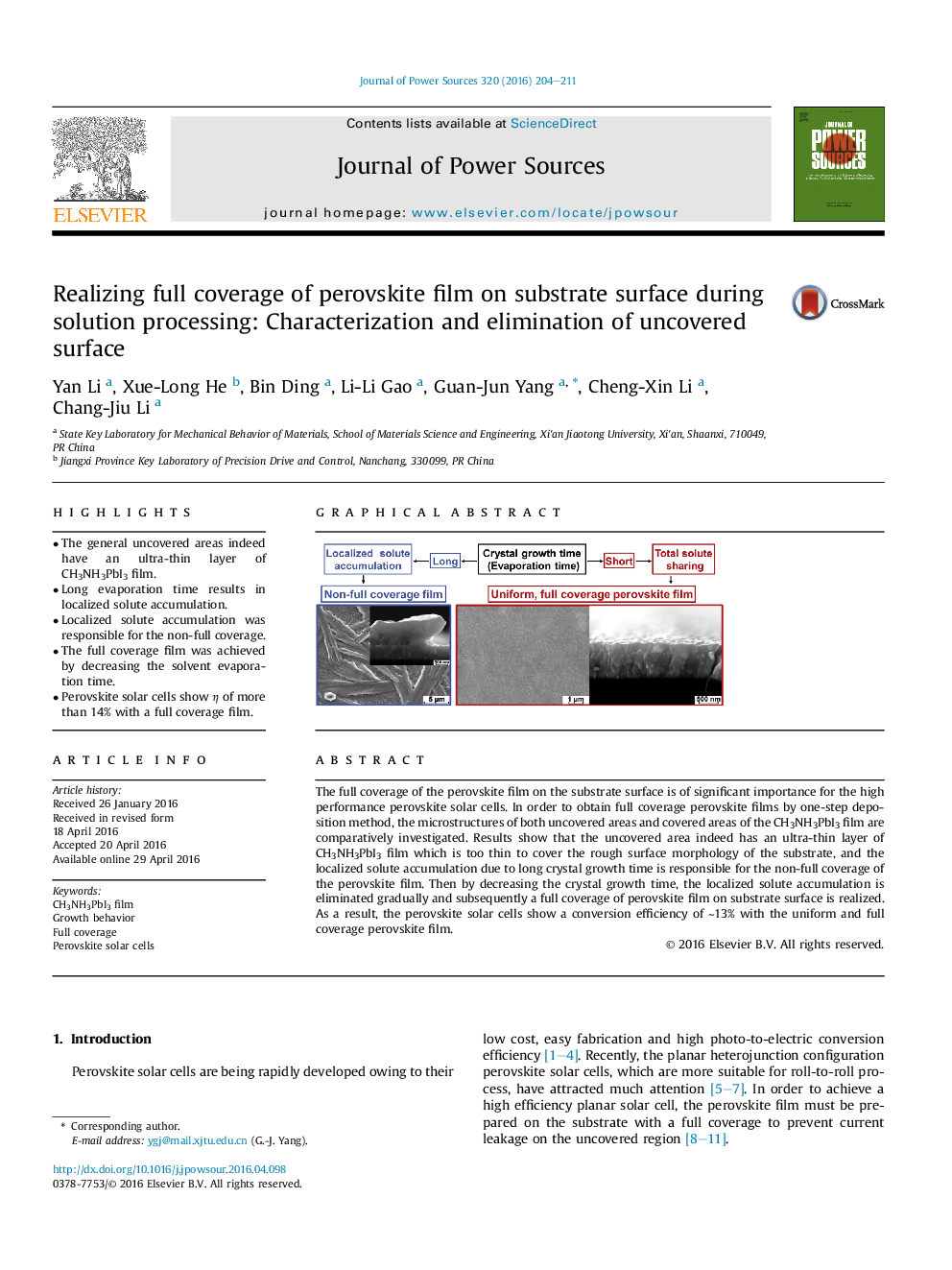| Article ID | Journal | Published Year | Pages | File Type |
|---|---|---|---|---|
| 1286036 | Journal of Power Sources | 2016 | 8 Pages |
•The general uncovered areas indeed have an ultra-thin layer of CH3NH3PbI3 film.•Long evaporation time results in localized solute accumulation.•Localized solute accumulation was responsible for the non-full coverage.•The full coverage film was achieved by decreasing the solvent evaporation time.•Perovskite solar cells show η of more than 14% with a full coverage film.
The full coverage of the perovskite film on the substrate surface is of significant importance for the high performance perovskite solar cells. In order to obtain full coverage perovskite films by one-step deposition method, the microstructures of both uncovered areas and covered areas of the CH3NH3PbI3 film are comparatively investigated. Results show that the uncovered area indeed has an ultra-thin layer of CH3NH3PbI3 film which is too thin to cover the rough surface morphology of the substrate, and the localized solute accumulation due to long crystal growth time is responsible for the non-full coverage of the perovskite film. Then by decreasing the crystal growth time, the localized solute accumulation is eliminated gradually and subsequently a full coverage of perovskite film on substrate surface is realized. As a result, the perovskite solar cells show a conversion efficiency of ∼13% with the uniform and full coverage perovskite film.
Graphical abstractFigure optionsDownload full-size imageDownload as PowerPoint slide
